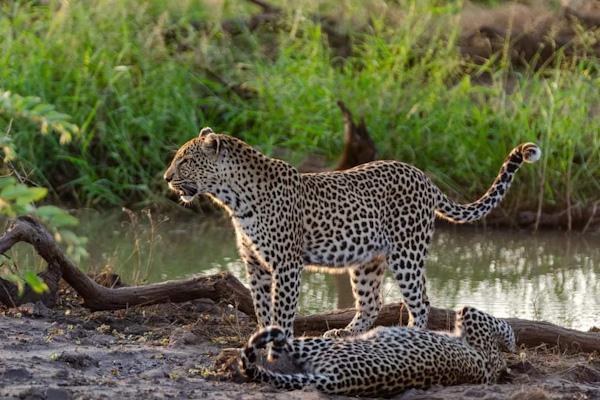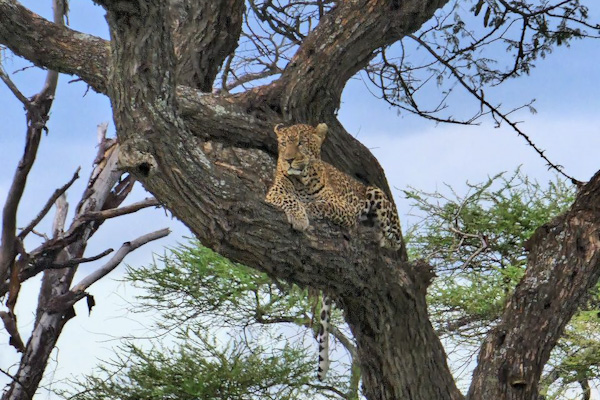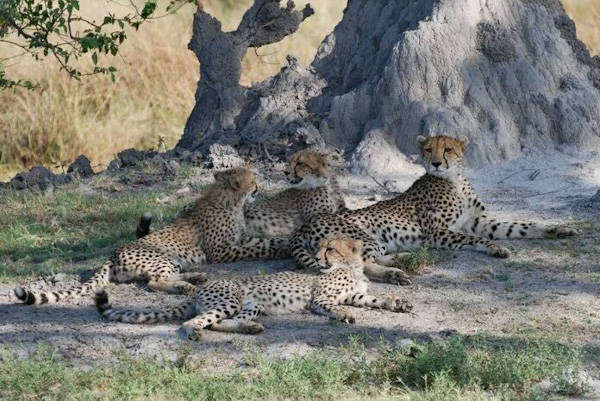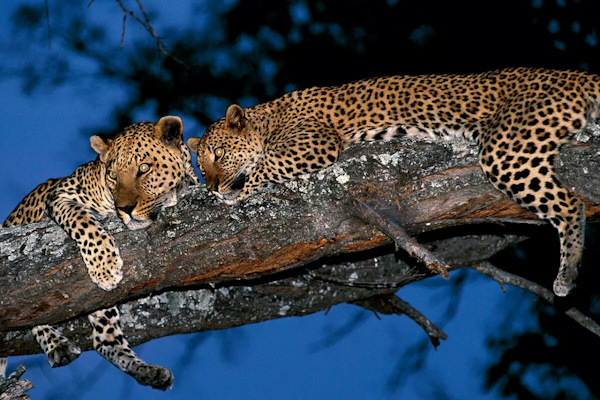Cheetah vs Leopard
Cheetahs and leopards are both part of the big cat family, which is super exciting! But what’s really interesting is that these two species of wild cat are actually quite different, even if you can’t always see that when you’re looking at them in the wild. So, we’ve put together this awesome guide to help you spot the difference between a cheetah and a leopard, as well as some other interesting facts about these amazing animals.
Cheetah
Cheetahs are amazing creatures! They love to roam around large expanses of land where there is lots of prey to enjoy. These include semi-deserts, thick bush and flat grasslands. They are amazing climbers, often climbing up the trunks and branches of trees to reach their prey. Their territory is vast, and they sometimes cross paths with other cheetahs or lions, making their presence felt across the landscape.

Leopard

Leopards are powerful cats! They can be found roaming in grasslands, plains, deserts and thick bush. Just like the cheetah, they too enjoy occupying expansive territory, which often overlaps with other leopards in the area. The leopard is also one of the most adaptable cats, especially when habitats change or they need to move to new territory which differs from the terrain they are used to. In fact, leopards move to more places than any other wild cat – how incredible is that?
Social behaviour
Cheetah
The cheetah is a social creature, living in family groups, including females with their cubs, solitary males and male coalitions.
Female cheetahs are known for their nomadic lifestyle, often seen wandering through the African savannah in search of prey, while males tend to be more relaxed and inactive, especially after a hunt. These beautiful creatures give birth to two to four cubs after a gestation period of 95 days. The little cubs are born with their eyes shut for a whole 10 days!
When they’re six weeks old, they start following their mum around and feeding from her kills. They’ll be inseparable from then on until weaning.
When her cubs are between 16 and 24 months old, the mother will sadly leave them. She is usually pregnant at this point and will do her best to look after her pups on her own. The cubs are still learning to hunt, so they’ll stick together until they’re around two to three years old and ready to fend for themselves. Then, they’ll each set off on their own to find their own way in the world.
Leopard
Leopards are the ultimate solitary species! They only socialise with other leopards during mating season and to raise their young. Leopards have several partners and breed all year round. Females attract possible mates by releasing pheromones. And the joys of motherhood for females are plentiful, with each mother giving birth to two to four cubs following a 96-day gestation period. The fun doesn’t stop there, as these families enjoy a new litter every 15 to 24 months!
Leopard cubs are tiny little things, weighing about two pounds when they first arrive. They spend the first week of their lives with their eyes closed, which is so cute! It’s an exciting time for the cubs as they start walking at just two weeks old. They leave the den around seven weeks and are weaned by three months. The amazing journey continues as they spend the next two years with their mother, learning to hunt and grow. And the best moment of all? When they leave their mother’s side to live alone for the very first time!

Hunting behaviour
It’s so interesting to learn that although the cheetah and leopard both prey on similar species, their hunting techniques are actually very different!
Cheetah
Cheetahs are such interesting animals, aren’t they? They’re thought to be crepuscular hunters because they like to hunt at dawn and dusk. But do you know what they really prefer? They like to hunt during the day because there aren’t as many nocturnal predators around then. They’re such keen hunters – they follow their prey really closely before launching into a high-speed chase. And they often trip their prey with their dew claw and then strangle it around the neck! Amazingly, cheetahs are not scavengers! They only consume fresh flesh and never return to a kill. However, if they are sick or injured and unable to hunt, they will starve to death.
Leopard
They hunt in the most amazing way, lying in ambush to catch their prey. They’re so good at using their eyes and ears to find what they’re looking for, and they’re amazing at stalking their prey. They’re so agile that they can surprise their prey and grab it around the head or neck to kill it! Leopards are a bit of a picky eater, so they’ll usually pull the hair or feathers off their meal before eating it. They also tend to dump the intestines of bigger animals and cover them up to hide the smell so that scavengers like lions and hyenas aren’t drawn to the scene. A carcass may also be covered with grass or dirt to keep it secure if the leopard needs to abandon it temporarily.

Physical characteristics
Cheetah
Male cheetahs are absolutely amazing – they’re much larger than their female counterparts. Their body lengths range from an impressive 115 to 160 cm, tail lengths are between 50-70 cm, and the height of their shoulders range from 65-90 cm. And, just imagine, an adult male cheetah can weigh up to 72 kg!
They have a top coat of tawny, light buff, or greyish-white fur, with paler and whiter underparts. Their distinctive black spots are closely spaced, creating a striking pattern that adds to their visual appeal.
And just look at those black tear marks under their eyes! These amazing markings not only add to their striking appearance, but also serve a practical purpose. They act as a natural sunscreen, shielding the eyes from glare and helping the cheetahs to focus on their prey with unparalleled clarity.
Leopard
Leopards are the smallest of the big cat species, but they are no less formidable! Their massive skulls and jaws are so strong that they can catch prey much larger than themselves! Their shoulder muscles are incredibly powerful, enabling them to climb trees with ease and carry their kills, which are often surprisingly large.
They can descend from trees headfirst, which is just amazing. Their robust shoulders also aid in their leaping and jumping abilities, with an incredible horizontal leap of 6m and a vertical jump of 3m. Despite their lack of speed, leopards can run at incredible speeds of up to 60 km per hour.
Threats to Survival
Cheetah
It’s really sad, but cheetahs are at risk of dying out. This is because of climate change, people hunting them, and damage to their habitats. All of these things are making their numbers go down. Even though cheetahs are super cute, their genes are a problem for their survival. They don’t have a lot of babies, so their numbers aren’t always going up. If there are fewer cubs, the cheetah population can’t grow or adapt to changes in their environment.
Leopard
It’s really sad, but leopards, which are classified as ‘vulnerable’ on the IUCN Red List, have vanished from 65% of their ancient territory in Africa. Despite their legal status, no thorough population estimate exists.
What is known is that leopards face a variety of dangers, including the same human forces that are driving many other African wildlife species to extinction: habitat loss and fragmentation, prey scarcity, human-animal conflict, and illicit wildlife trafficking. It’s heartbreaking to think that leopards in West and East Africa have decreased by more than half between 1970 and 2005 because of a drop in prey. It’s also believed that the leopard population has dropped by more than 30% in the last three generations, which is about 22 years.
Just few FAQs
Just think how fast a cheetah can run! They can reach speeds of 110 km/h! But, and this is interesting, a cheetah can sprint 2.7 times quicker than the quickest human!
Where do cheetahs live?They are mostly found in Africa’s eastern and southern regions, south of the Sahara Desert. There are also small populations in North Africa.
How many leopards are left in the world?
The good news is that there are around 250.000 leopards in the world today. Conservationists say that they are classified as Near Threatened. Fortunately, there are enough of them left that we might be able to help them repopulate.
Young male leopards spotted during night gamedrive

